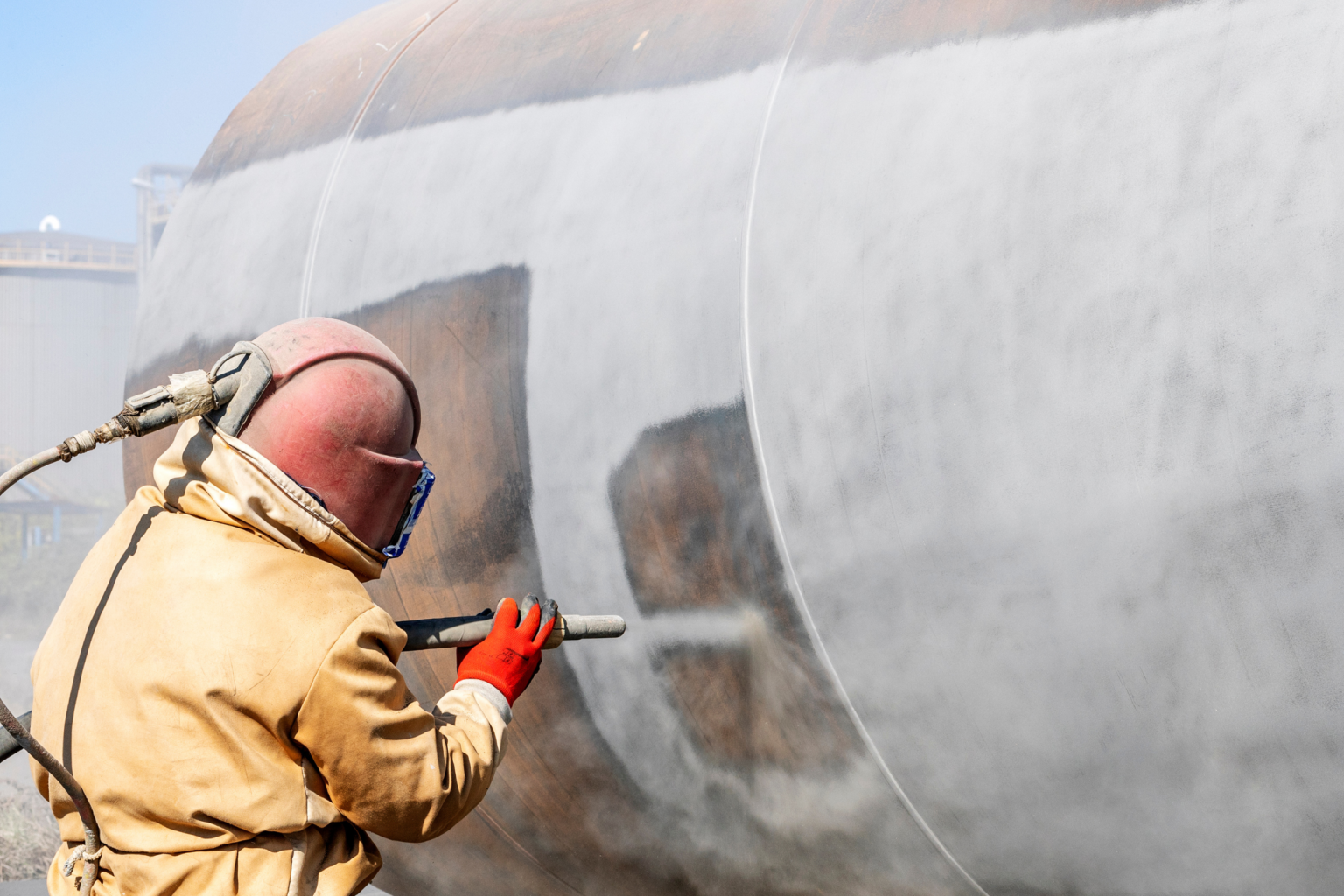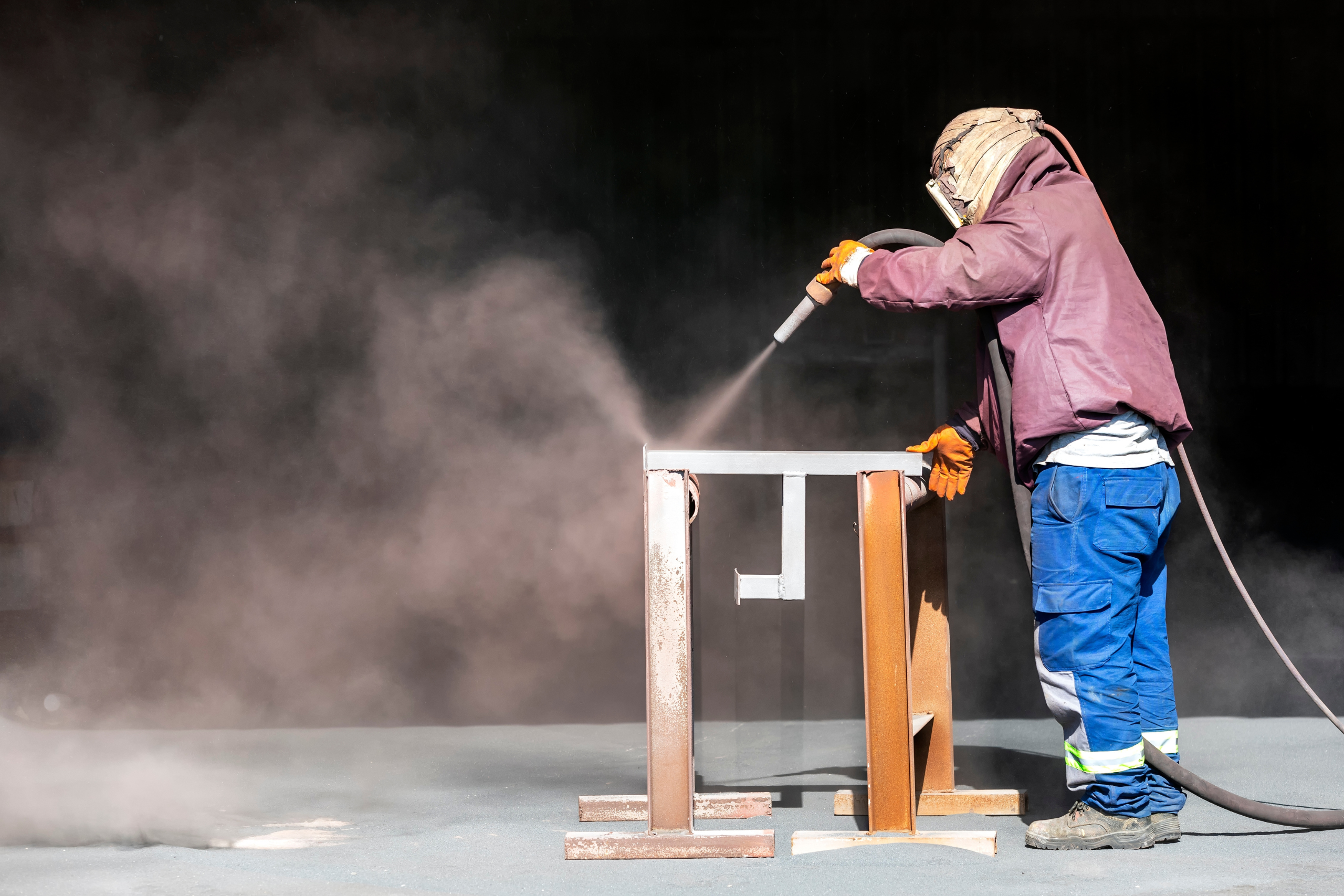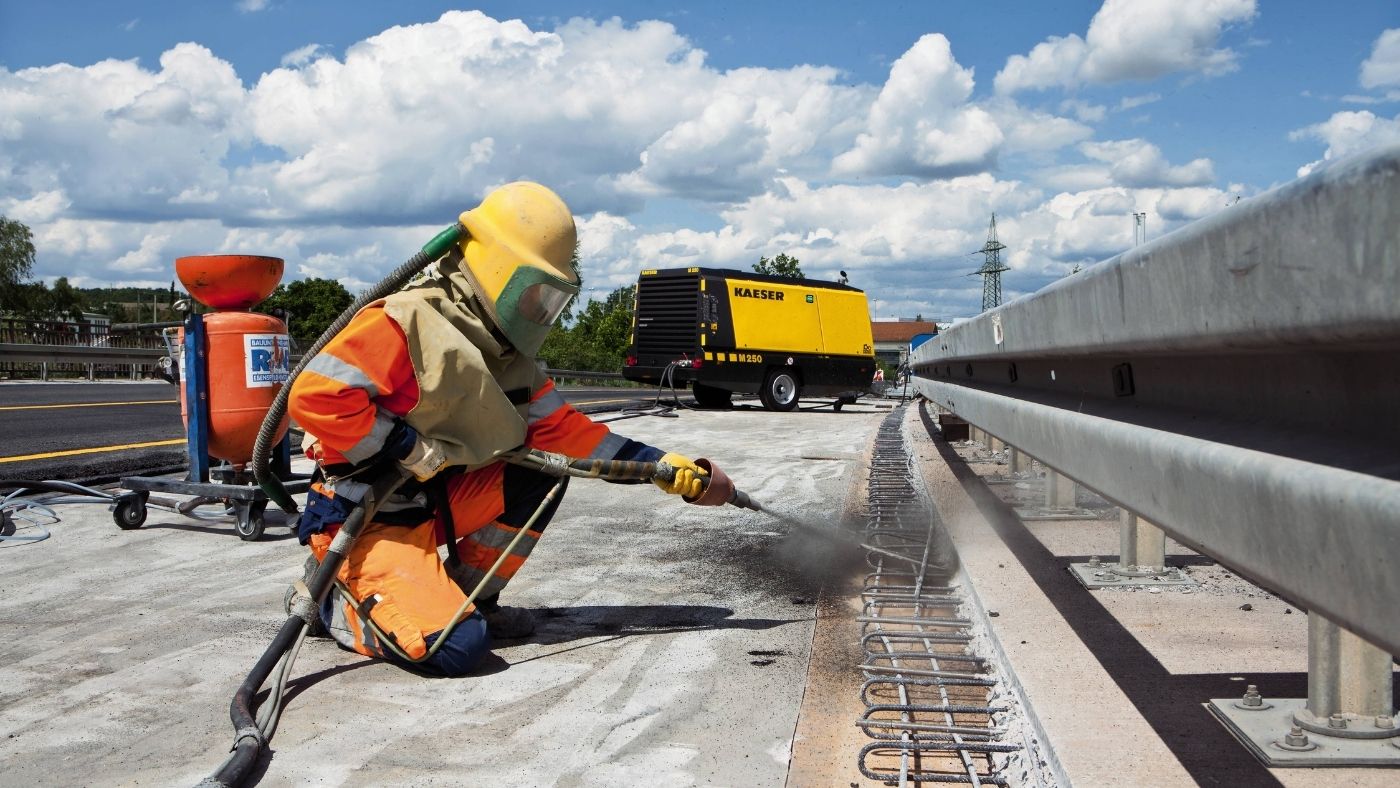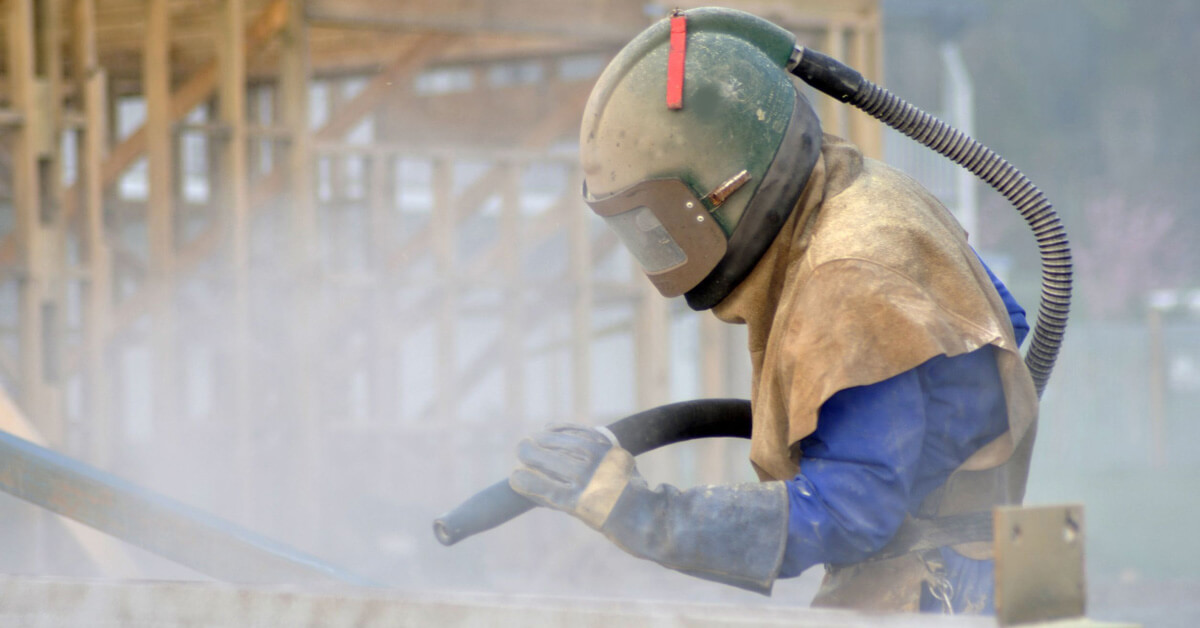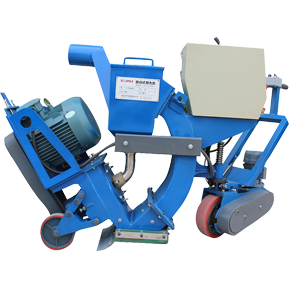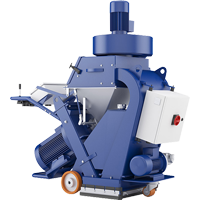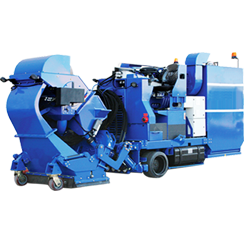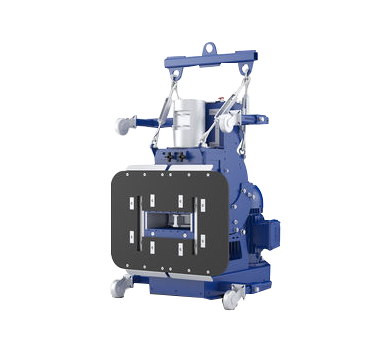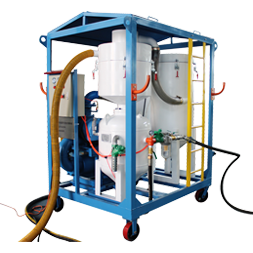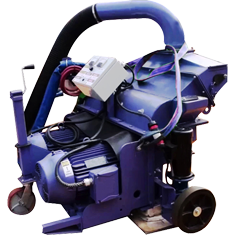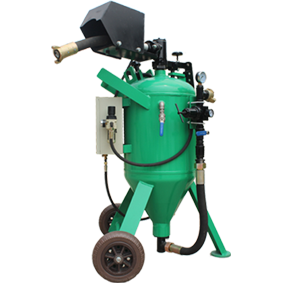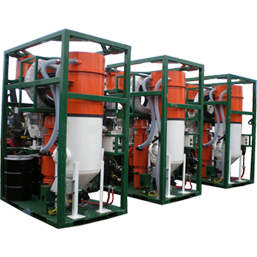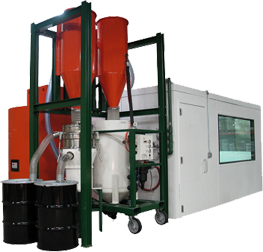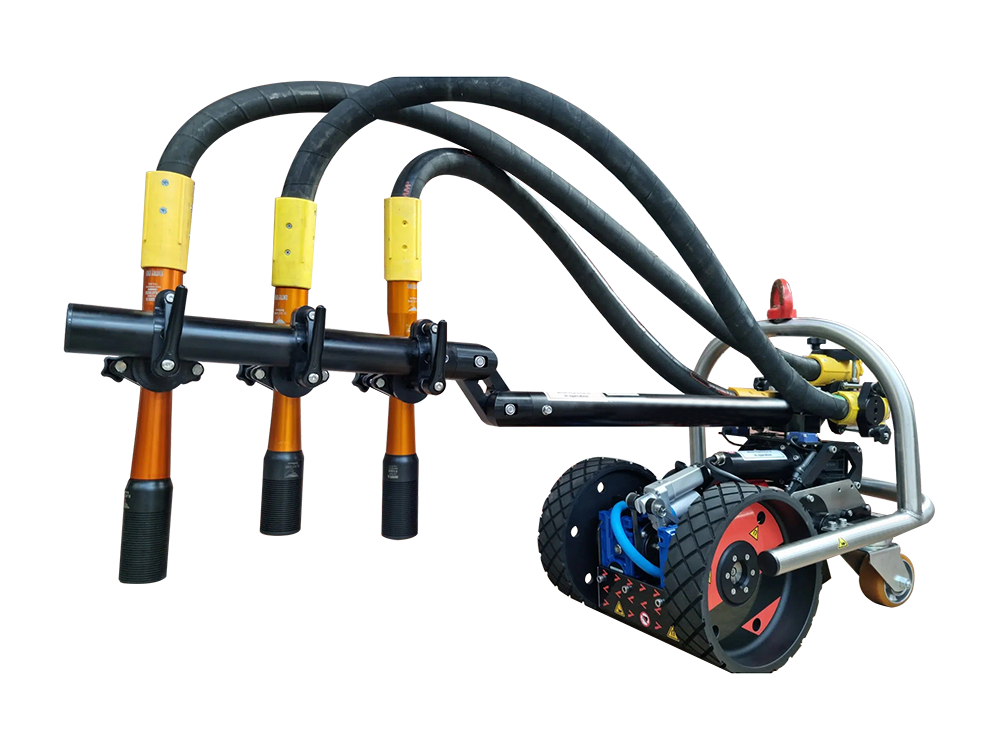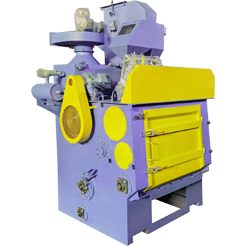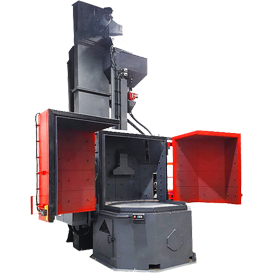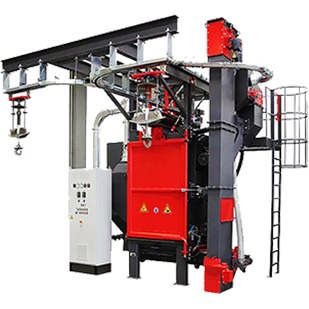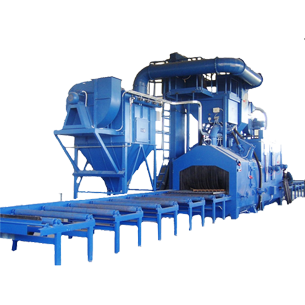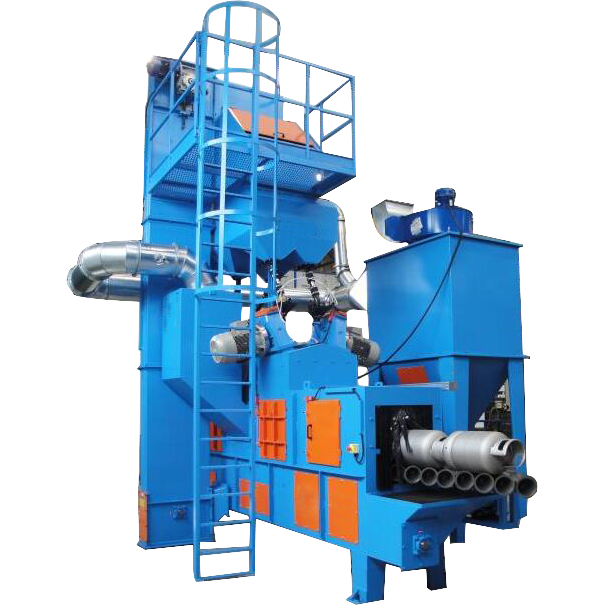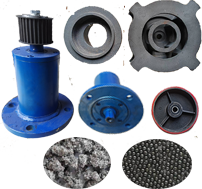BLOG
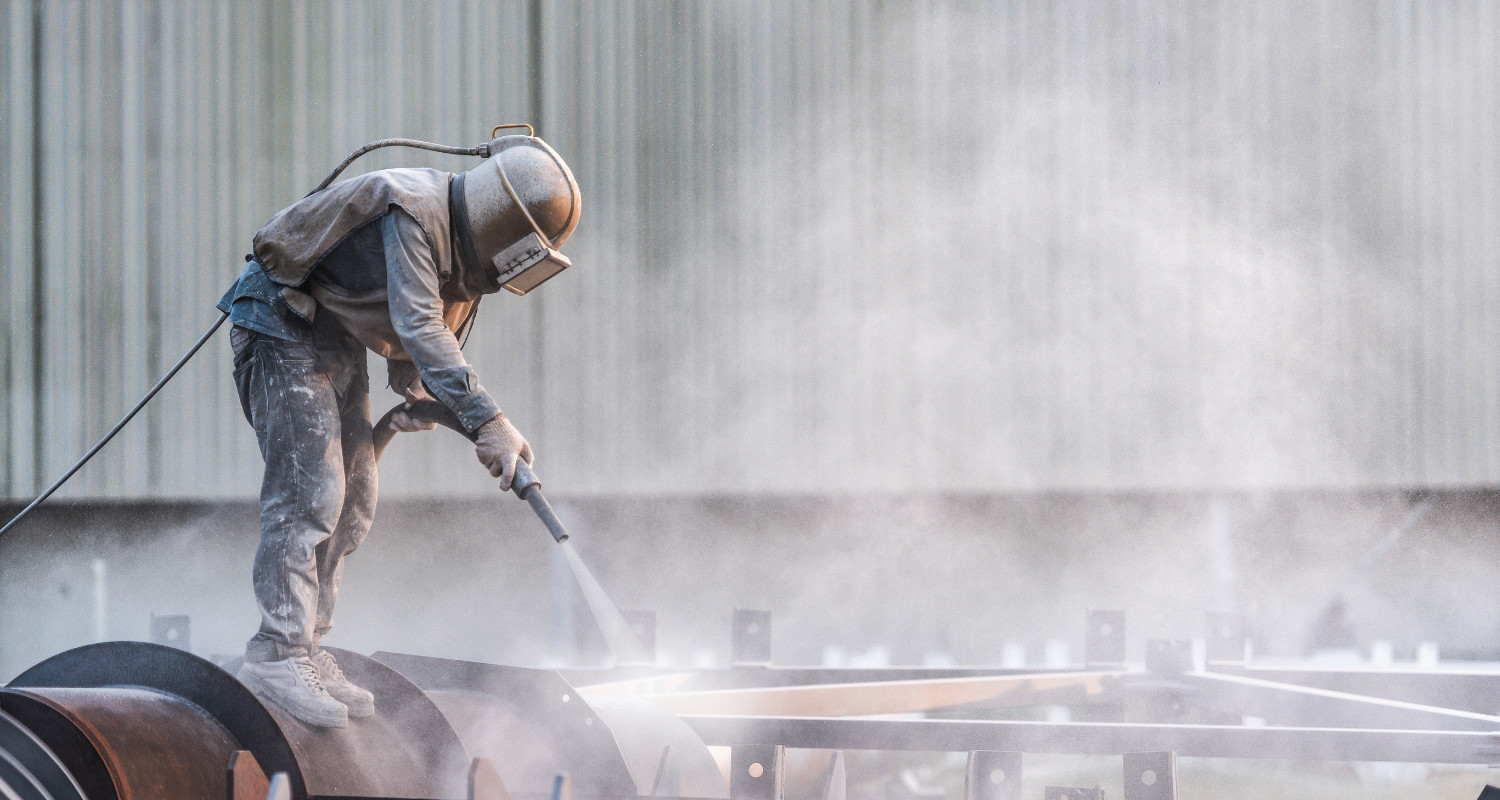
Getting surfaces ready is really important in many industries because it helps materials and products last longer and work better. Shot blasting and sandblasting are two methods that are well-known for being really good at this. They both aim to clean and prep surfaces, but they use different tools and techniques.
This blog aims to shed light on both shot blasting and sandblasting, comparing their methods, uses, and outcomes. With the similarities and differences between these two techniques untangled in this blog, you can have a clearer picture of when and why to use each one. Let’s dive in!
Understanding shot blasting
Shot blasting is a surface treatment process that involves propelling a stream of abrasive material (referred to as "shot") under high pressure against a surface to clean it, modify its texture, or prepare it for painting or coating. Unlike manual sanding or chemical treatments, shot blasting is a mechanized method that ensures uniformity and efficiency.
How shot blasting works and the equipment used
lMechanism: Shot blasting operates by using a wheel that rapidly spins, flinging the shot material out towards the surface being treated. This action not only cleans the surface by removing contaminants but also can induce compressive stress that improves the surface properties.
lEquipment: The primary equipment includes a blasting machine which is equipped with a wheel that propels the shot. The machine may vary in size and design depending on the application, ranging from small, portable systems to large, complex setups for bigger projects. Additional components like a recovery system to recycle the shot, and dust collection systems to maintain a clean working environment, are also integral.
Types of materials used in shot blasting
lSteel Shots: Spherical in shape and used for peening to improve fatigue life of metals.
lCut Wire: Precise and uniform in size, ideal for peening and reducing the likelihood of contamination.
lAluminum Oxide: Aluminum oxide serves as an aggressive abrasive for cleaning, preparing surfaces, and removing material without causing significant alteration to the base material.
Applications and industries where shot blasting is preferred
lAutomotive Industry: For cleaning and preparing parts like chassis, springs, and wheels for coating.
lShipbuilding: To remove rust and old paint from ships’ hulls.
lAerospace: For stress relieving and surface preparation of aircraft components.
lFoundry and Forging: Cleaning molds and removing burrs or scale from castings and forgings.
lInfrastructure: Preparing concrete floors and steel structures for coatings and paints.
Shot blasting is preferred in scenarios where achieving a pristine, uniform, and long-lasting surface is essential. Its efficient preparation of surfaces for further treatments makes it the preferred method in industries requiring impeccable surface quality and durability.
Understanding sandblasting
Sandblasting, alternatively termed abrasive blasting, involves cleaning, stripping, or etching a material's surface by propelling particles at high velocity. The objective is to eliminate surface contaminants, ready surfaces for painting or coating, or generate a desired surface texture.
The sandblasting process and equipment involved
lProcess: Sandblasting involves propelling abrasive materials against a surface through a blasting hose using compressed air. The force of the abrasive particles striking the surface cleans or modifies its texture.
lEquipment: Key equipment includes an air compressor to provide a stream of high-pressure air, a blasting pot holding the abrasive material, and a blasting hose with a nozzle. Personal protective equipment (PPE) is essential for safety, given the hazardous nature of the process.
Types of abrasive materials used in sandblasting
lSilica Sand: Traditionally used for its effectiveness but less common now due to health risks.
lGlass Beads: Create a smooth, satin or matte finish without damaging the surface.
Applications and industries that commonly use sandblasting
lRestoration Projects: Removing paint, rust, and contaminants from buildings and statues.
lAutomotive: Cleaning vehicle components and frames before painting.
lShip Maintenance: Cleaning ship hulls of barnacles and rust.
lManufacturing: Preparing metal surfaces for welding or finishing.
lConstruction: Texturing concrete for aesthetic purposes or to prepare for coatings.
Sandblasting is versatile, able to work with a range of materials and for various purposes. Its ability to efficiently clean and prepare surfaces for further processing or to achieve a desired finish makes it a valuable technique across numerous industries. Safety considerations, particularly regarding the type of abrasive material used and the protection of operators, are paramount due to the high-velocity particles used in the process.
Key differences between shot blasting and sandblasting
Although shot blasting and sandblasting are both effective methods for surface preparation, they diverge significantly in their approaches, applications, and results. It's essential to comprehend these distinctions to choose the appropriate technique for your particular requirements. Let's explore the comparative aspects of these two methods.
Abrasive materials used
lShot Blasting utilizes metallic shots or beads that are round in shape. These materials are reusable and typically result in less waste.
lSandblasting employs a wide range of abrasive materials, including sand, glass beads, and steel grit. The choice of abrasive depends on the desired finish and material being blasted.
Equipment and technology
lShot Blasting machines are equipped with a wheel that throws the shot at the surface. This method is highly mechanized and can be contained within an enclosure to recycle the shot.
lSandblasting requires a compressor, blasting pot, and nozzle. It is often a more manual process, though automated systems exist for specific applications.
Efficiency and surface finish
lShot Blasting is generally faster and more uniform, making it suitable for treating large areas or volumes of material. The finish can be precisely controlled through the choice of shot size and type.
lSandblasting provides a wider range of textures, from smooth to rough, depending on the abrasive used. It can be more versatile but may require more time to achieve a uniform finish over large areas.
Environmental considerations and safety measures
Both methods produce dust and necessitate ventilation and dust collection systems to safeguard the environment and the health of workers. However, the precise safety protocols and environmental implications may differ.
lShot Blasting often uses recyclable materials, reducing waste but still requires careful handling due to the potential for metallic dust.
lSandblasting with silica sand poses serious health risks due to silica dust inhalation, leading many industries to substitute safer abrasives. Regardless of the material, personal protective equipment (PPE) is essential for operators in both processes to protect against airborne particles and noise.
Choosing between shot blasting and sandblasting
Selecting the right surface preparation method is pivotal for achieving optimal results in any project. The decision between shot blasting and sandblasting should be informed by the material being treated, the desired finish, environmental considerations, and applicable industry standards or regulations.
Guidance on choosing the appropriate method
lMaterial Sensitivity: For delicate materials that could be damaged by high-impact processes, sandblasting with a softer medium like glass beads or soda is advisable. Shot blasting, with its more aggressive action, is better suited for durable materials like metal that also benefit from the peening effect.
lDesired Finish: The desired finish directly affects the surface's final texture and suitability for subsequent treatments. Shot blasting is ideal for creating rough surfaces and removing heavy contaminants, while sandblasting offers a finer finish suitable for delicate surfaces and precise work.
lEnvironmental Considerations: The environmental impact of the blasting method is an essential factor. Shot blasting, which often recycles its shot, may be seen as more environmentally friendly due to less waste. However, the choice of abrasive material in sandblasting can mitigate environmental concerns, provided it is chosen wisely and used with proper dust collection systems.
Industry standards and regulations
The choice between shot blasting and sandblasting can also be influenced by specific industry standards and regulations, especially concerning worker safety and environmental protection. For example:
lHealth and Safety Regulations: Regulations such as those set by OSHA (Occupational Safety and Health Administration) in the United States regarding airborne dust and silica exposure significantly impact the choice of abrasive material. The use of silica sand, for instance, has become highly regulated due to its health risks.
lEnvironmental Standards: Standards concerning the disposal of used materials and emissions can also guide the choice between shot blasting and sandblasting. Recycling capabilities of shot blasting make it appealing where waste reduction is prioritized.
lQuality Standards: Certain industries have quality standards that specify surface preparation methods. Aerospace and automotive sectors, for example, might have stringent requirements that favor one method over the other for specific applications.
In conclusion
In summary, the choice between shot blasting and sandblasting hinges on understanding the project requirements, material characteristics, and finish objectives. Equally, adhering to industry standards and environmental regulations will ensure that the chosen method not only delivers the desired outcome but does so safely and sustainably. Consulting with professionals who have expertise in surface preparation can also provide valuable insights into the most appropriate method for your project.
RELATED POSTS
LEAVE A REPLY
SEARCH
PRODUCT CATEGORIES
PRODUCTS
 Floor Shot Blasting Machine
Floor Shot Blasting Machine Steel Shot Blasting Machine
Steel Shot Blasting Machine Driving Type Shot Blasting Machine
Driving Type Shot Blasting Machine Vertical Shot Blasting Machine
Vertical Shot Blasting Machine Blast and Vacuum Recovery Machine
Blast and Vacuum Recovery Machine ROVAN Faster Blaster
ROVAN Faster Blaster Dustless Blasting Machine
Dustless Blasting Machine Sponge Blasting Machine
Sponge Blasting Machine Sand Blasting Booth
Sand Blasting Booth Automatic Robot Blast Machine
Automatic Robot Blast Machine Crawler Shot blasting Machine
Crawler Shot blasting Machine Turntable Shot Blasting Machine
Turntable Shot Blasting Machine Hook Type Shot Blasting Machine
Hook Type Shot Blasting Machine Roller Conveyor Shot Blasting Machine
Roller Conveyor Shot Blasting Machine LPG Cylinder Shot Blasting Machine
LPG Cylinder Shot Blasting Machine Abrasives/Accessories & Others
Abrasives/Accessories & Others

